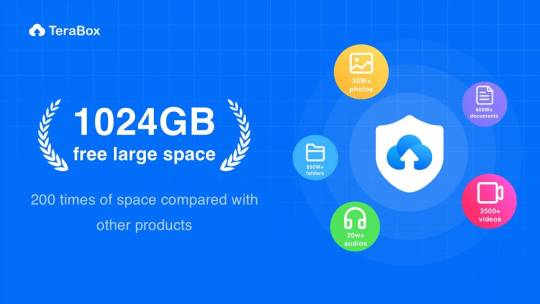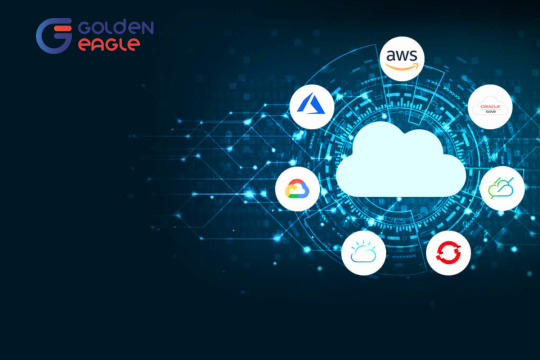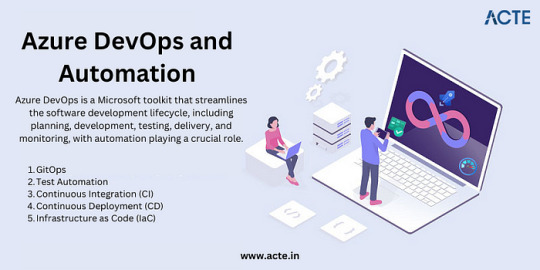#cloud services
Text
Unisex Premium Themed T-shirts Knights Of Odin Volume 3
Elevate your urban fashion game with our Unisex Premium Themed T-shirts from the Knights Of Odin Volume 3 collection. This sweatshirt boasts a timeless design with modern comfort, making it a must-have for trendsetters.
Key Features
Ultimate Comfort: Enjoy soft fleece inside for a cozy and luxurious feel.
Premium Quality: Crafted with 100% cotton face and varying cotton/polyester blends, it offers durability and comfort.
Substantial Feel: The 8.5 oz/y² fabric weight adds a substantial and high-quality touch to the sweatshirt.
Durable Construction: With side-seamed construction and double-needle stitching, this sweatshirt is designed to last.
Thoughtful Production: Made on demand to reduce overproduction, reflecting our commitment to sustainability and ethical practices.



#cloud hosting#clouds#cloud services#technology#marketing#service#digital marketing#branding#delhi#cloudservice#city#ecommerce#cloud service provider#UnisexPremiumSweatshirt#Shop#Products#art#Onlineshop#themedshirts#whitetshirts#tshirtsformen#tshirtshop#besttshirt#stylishtshirtsformen#ladiest-shirt#tshirtcollection#blackteeshirtsformen#t-shirtofwomen#whitet-shirt#womenfashions
3 notes
·
View notes
Text

TeraBox: Free 1TB (1024 GB) Cloud Storage & File Storage.
Hey there, tech-savvy folks! Are you ready to embark on a journey into the exciting world of TeraBox? Buckle up as we delve into everything you need to know about this innovative cloud storage solution. From its safety features to its versatility across different platforms, we’ve got you covered. So let’s dive right in and unlock the full potential of TerabBox together!
1. What is Terabox?
TeraBox is your digital sanctuary in the vast landscape of cloud storage. It offers a secure and convenient way to store, access, and share your files online. Whether you’re looking to safeguard your precious memories or streamline your business operations, Terabox has the tools to help you do it all.
2. Is TeraBox Safe?
Safety first, right? You’ll be pleased to know that Terabox prioritizes the security of your data. With state-of-the-art encryption protocols and robust privacy measures, your files are kept under lock and key. So you can rest easy knowing that your sensitive information is in good hands.
3. TeraBox Cloud Storage
Terabox’s cloud storage capabilities are second to none. With ample space to accommodate your growing collection of files, you’ll never have to worry about running out of room again. Plus, its seamless integration with various devices and operating systems ensures that you can access your files whenever, wherever.
#art#oscars#oscars 2024#ofmd#bg3#young royals#the owl house#ryan gosling#writers of tumblr#writers on tumblr#terabox#cloud services#cloud storage#cloud solutions#cloud speaks#cloud strife
2 notes
·
View notes
Text
Power of Natural Language Processing with AWS
Dive into the world of Natural Language Processing on AWS and learn how to build intelligent applications with services like Amazon Comprehend, Transcribe, and Polly. Explore the future of language-driven AI and cloud computing #AWSNLP #AI #CloudComputing
Natural Language Processing (NLP) has emerged as a transformative force in the realm of artificial intelligence, enabling computers to comprehend and generate human-like text. As businesses increasingly recognize the value of language-driven insights and applications, cloud platforms such as Amazon Web Services (AWS) have played a pivotal role in democratizing access to advanced NLP capabilities.…

View On WordPress
#AI Development#AI Services#Amazon API Gateway#Amazon Comprehend#Amazon Lex#Amazon Polly#Amazon Transcribe#Amazon Translate#amazon web services#aws#AWS Lambda#chatbot development#Cloud Computing#Cloud Services#Conversational Interfaces#Language Processing Applications#Language Understanding#Machine Translation#natural language processing#Neural Machine Translation#NLP#sentiment analysis#speech recognition#Text Analysis#text-to-speech#Voice Interfaces
4 notes
·
View notes
Text
AWS Well-Architected Framework: Designing Reliable And Scalable Cloud Solutions

2 notes
·
View notes
Text
My Journey with Azure IoT Hub: Connecting and Managing IoT Devices at Scale
The Internet of Things (IoT), which enables seamless connectivity and automation across numerous industries, has completely changed the way we engage with technology. I was curious to learn more about the Internet of Things and its possible uses as an aspiring IoT enthusiast. My experience using Azure IoT Hub, Microsoft’s cloud-based IoT platform, and how it assisted me in connecting and managing IoT devices at scale are both discussed in this blog.
Getting Started with Azure IoT Hub

To embark on my IoT journey, I began by understanding the fundamentals of Azure IoT Hub. Azure IoT Hub is a fully managed service that acts as a central hub for bi-directional communication between IoT devices and the cloud. It provides secure, reliable, and scalable connectivity for IoT solutions. Setting up an Azure IoT Hub was my first step. While the process was relatively straightforward, I encountered a few challenges along the way.
Connecting IoT Devices
Once Azure IoT Hub was set up, I delved into the world of IoT devices. I worked with various types of IoT devices, ranging from simple sensors to complex industrial machines. Connecting these devices to Azure IoT Hub required the implementation of device-specific protocols such as MQTT or HTTP. Additionally, I focused on securing device connections and data transmission by utilizing security features provided by Azure IoT Hub.
Real-world examples of IoT devices connected to Azure IoT Hub are aplenty. For instance, in the healthcare industry, wearable devices can transmit patient vitals to Azure IoT Hub, allowing healthcare providers to monitor and respond to critical situations promptly. In smart homes, IoT devices such as thermostats and security cameras can be connected to Azure IoT Hub, enabling remote control and monitoring capabilities.
Managing IoT Devices at Scale
As my IoT project grew, I encountered the need to scale up the number of connected devices. Azure IoT Hub offered robust device management features that simplified the process of managing a large fleet of devices. I could remotely monitor the health, status, and firmware version of each device, enabling efficient troubleshooting and maintenance. Implementing best practices for device management, such as grouping devices based on location or functionality, enhanced the overall operational efficiency of my IoT solution.
Data Ingestion and Processing
Data collected from IoT devices is a valuable asset that can drive actionable insights and informed decision-making. Azure IoT Hub facilitated the ingestion and routing of data to Azure services for further processing and analysis. I had the opportunity to work with Azure Stream Analytics and Azure Functions, which enabled real-time data processing, transformation, and visualization. Leveraging these services allowed me to unlock the true potential of IoT data and derive meaningful insights.

Security and Compliance
Any IoT solution must prioritize security. Azure IoT Hub provided robust security features that ensured end-to-end protection of IoT deployments. These features included device authentication, message encryption, and integration with Azure Active Directory for access control. Additionally, Azure IoT Hub helped me meet compliance and regulatory requirements by providing built-in support for industry standards such as ISO 27001, HIPAA, and GDPR. Throughout my journey, I learned valuable lessons and implemented best practices for securing IoT solutions.
Scalability and Performance
Scaling an IoT solution to handle thousands or millions of devices is a complex task. Azure IoT Hub offered scalability features that allowed me to effortlessly handle large-scale IoT deployments. With Azure IoT Hub’s device-to-cloud messaging capabilities, I could reliably transmit messages to and from a massive number of devices. Moreover, I gained insights into optimizing IoT solutions for performance by considering factors such as message size, frequency, and device capabilities.
Real-World Use Cases
To understand the versatility of Azure IoT Hub, it is crucial to explore real-world use cases. In the manufacturing industry, Azure IoT Hub can be leveraged to connect and monitor machines on the factory floor, ensuring optimal performance and predictive maintenance. In the agriculture sector, IoT devices connected to Azure IoT Hub can collect data on soil moisture levels, temperature, and humidity, enabling farmers to make data-driven decisions for irrigation and crop management. These use cases highlight the valuable role that Azure IoT Hub plays in various domains and industries.
Future of IoT and Azure IoT Hub
The future of IoT is promising, with emerging trends shaping the landscape. As IoT continues to evolve, Azure IoT Hub will play a crucial role in enabling seamless connectivity, advanced analytics, and artificial intelligence capabilities. Integration with other Azure services and continuous updates from Microsoft ensure that Azure IoT Hub remains at the forefront of IoT innovation. The possibilities for IoT applications are limitless, and Azure IoT Hub will continue to empower developers and organizations to build robust and scalable IoT solutions.
Throughout my journey with Azure IoT Hub, I gained valuable insights and experiences. Azure IoT Hub simplified the process of connecting and managing IoT devices, providing a reliable and scalable platform. The seamless integration with other Azure services allowed me to unlock the full potential of IoT data. Moreover, the security and compliance features provided peace of mind, ensuring that my IoT solution was protected from threats. Overall, Azure IoT Hub has been instrumental in my IoT journey, contributing to enhanced efficiency and productivity.
Recommendations and Tips
For those interested in starting their own IoT journey with Azure IoT Hub, I offer the following recommendations and tips:
Begin with a clear understanding of your IoT use case and requirements.
Familiarize yourself with the documentation and resources provided by Microsoft to gain a solid foundation.
Start small and gradually scale your IoT solution as needed.
Take advantage of the device management and security features offered by Azure IoT Hub.
Leverage other Azure services such as Azure Stream Analytics and Azure Functions to derive meaningful insights from IoT data.
Stay updated on emerging trends and best practices in the IoT space.
To deepen your knowledge of IoT and Azure IoT Hub, I recommend exploring Microsoft’s official documentation, participating in the ACTE Technologies Microsoft Azure training, and attending IoT-focused conferences and events.

Azure IoT Hub has proven to be a powerful and comprehensive platform for connecting and managing IoT devices at scale. Throughout my journey, I witnessed the transformative potential of IoT solutions and the crucial role played by Azure IoT Hub in enabling seamless connectivity, advanced analytics, and robust security. As IoT continues to evolve, Azure IoT Hub will undoubtedly remain at the forefront of IoT innovation, empowering organizations to build scalable and efficient IoT solutions. I encourage readers to embark on their own IoT journeys, leveraging the capabilities of Azure IoT Hub to unlock the full potential of IoT. Join me in embracing the future of IoT and revolutionizing industries through connected devices. Please leave your comments, stories, and inquiries in the space provided below. Let’s continue the conversation and explore the endless possibilities of IoT together.
#microsoft azure#cloud services#information technology#education#tech#technology#iot#innovation#cloud computing
3 notes
·
View notes
Text
youtube
ProLink IT Solutions specializes in outsourced managed IT services designed to increase the productivity and efficiency of your business. We’ll become your IT department, giving you access to a team of dedicated professionals tasked with handling all your tech needs. You’ll get enterprise-level solutions for a predictable monthly fee.
ProLink IT Solutions — IT Consulting & IT Support Services
8783 Redwood Rd STE A, West Jordan, UT 84088
(801) 938–3900
Official Website: https://prolinkit.com/
Google Plus Listing: https://maps.google.com/?cid=8762871895330118701
Other Links
managed it services : https://prolinkit.com/it-support/managed-it-services/
cloud services : https://prolinkit.com/it-support/cloud-managed-services/
data backup services : https://prolinkit.com/it-support/data-backup-and-recovery-services/
remote it support : https://prolinkit.com/it-support/remote-it-support-247/
voip services near me : https://prolinkit.com/it-support/business-voip-phone-service/
Other Service We Provide:
managed IT services
Remote IT Support
Network Cabling Services
Hardware and Software Services
Cloud Managed Services
Business VoIP Phone Service
Expect with Office 365
Managed Security Services
Data Backup and Recovery Services
Follow Us On
Twitter: https://twitter.com/ProLinkitsoluti
Pinterest: https://www.pinterest.com/prolinkit/
Linkedin: https://www.linkedin.com/company/prolink-i-t-solutions/
Facebook: https://www.facebook.com/prolinkit/
Instagram: https://www.instagram.com/prolinkitsolutions/
2 notes
·
View notes
Text
How practice tests help you prepare for cloud certification exams
Cloud computing is a form of Internet-based computing that provides shared processing resources and data to computers and other devices on demand. A model for enabling ubiquitous, on-demand network access to a shared pool of reconfigurable computing resources (such as networks, servers, storage, applications, and services) that can be quickly provisioned and released with little management effort or service provider interaction is what is generally referred to as cloud computing.
Practice tests for cloud computing are the best way to prepare for the certification exam. Practice tests are designed to give you a feel of what the real exam is like. They also make sure that you know all the important topics and concepts in order to pass them with flying colors. Cloud computing certification practice tests are not a replacement for a dedicated, in-depth study guide. Remember that the best way to prepare for the exam is to take an online course or attend a VMware certification course.
Practice tests for cloud computing can be categorized into different types:
- Practice exam questions
- Online practice test
- Mock test
- Self-assessment test
- Free practice questions
There are many practice tests that you can take to take your preparation to next level, for example, The Microsoft Azure Practice Test is a free practice test with over 50 questions. It provides a variety of difficulty levels and is available in English, Spanish, and German.
#cloud computing#cloud certifications#cloud practice#certification practice test#azure practice#aws practice#cloud services#technology#it
8 notes
·
View notes
Text
Seamless Business Operations With Managed Azure Services

Comprehensive cloud computing solutions for Microsoft Azure offer a range of services, including virtual machines, storage, databases, and analytics, allowing businesses to build, deploy, and manage their applications and services with ease. Our Azure cloud services enable organizations to scale their resources up or down based on their needs and to leverage the benefits of Azure cloud computing to drive innovation, enhance productivity, and streamline their operations. For more info Contact @ +91 870097462
2 notes
·
View notes
Text
What is cloud computing?

Cloud computing is the on-demand delivery of computing services which includes servers, data storage, databases, networking, software, analytics, and intelligence.
In cloud computing customer will have to pay only for the services he/she uses. As business change customer can scale their application based on their business requirements.
Benefits of cloud computing
Cost
By using cloud computing services, we can eliminate the expenses of purchasing the software and hardware resources that are used in the data centers. The entire infrastructure operations such as electricity, power, cooling, round-the-clock operations, server scaling, etc are done for us by the cloud provider.
Speed
Cloud computing providers are very fast at delivering services and are mostly self-service. A lot of things are done within minutes including the creation of servers, managing databases, etc, this enables businesses flexibility and on-time service delivery to clients.
Security
Cloud computing provides best security practices that include policies, and technologies that strengthen the security of the applications or software's that are hosted on the cloud. This reduces the risk of exposure to potential threats.
Uses of cloud computing
Creating cloud-native applications
Testing and building applications
Storing and backing up data
Data Analysis
Audio and video streaming services
For service and deployment models, follow below link.
https://fsh.org.in/blog-details/Cloud+Computing/What+is+Cloud+Computing/31
4 notes
·
View notes
Text
The Impact of Cloud Computing on IT Companies

Cloud computing has changed the way we store and access data. The ability to store data remotely and access it from any location with an internet connection has transformed the way businesses operate. For IT companies, the impact of cloud computing has been particularly significant. In this blog post, we will explore the impact of cloud computing on IT companies in detail.
1.Increased Efficiency.
One of the biggest impacts of cloud computing on IT companies is the increased efficiency that it brings. With cloud computing, IT companies can automate many of their processes and workflows, reducing the need for manual intervention. This not only saves time and effort but also reduces the risk of errors and ensures consistency in operations.
Cloud computing also enables IT companies to scale their operations quickly and easily. They can add or remove resources on-demand, depending on their needs. This agility allows IT companies to respond quickly to changes in demand, ensuring that they can deliver high-quality services to their clients.
2.Improved Collaboration.
Another significant impact of cloud computing on IT companies is the improved collaboration that it enables. Cloud-based collaboration tools such as Google Docs and Microsoft Teams allow team members to work together in real-time, regardless of their location. This means that IT companies can collaborate more effectively with their clients, partners, and other stakeholders.
Cloud-based collaboration tools also enable IT companies to work more efficiently with remote teams. With the ability to share files and work on documents in real-time, remote teams can work together seamlessly, ensuring that projects are delivered on time and within budget.
3.Reduced Costs.
Cloud computing has also had a significant impact on the costs of IT companies. By leveraging cloud-based infrastructure and services, IT companies can reduce their capital expenditures and move to an operational expenditure model. This means that they only pay for the resources and services that they use, rather than having to invest in expensive hardware and software upfront.
Cloud computing also eliminates the need for IT companies to maintain their own infrastructure and data centres, reducing the costs associated with maintenance, upgrades, and security. Cloud providers handle these tasks, freeing up IT companies to focus on their core competencies and deliver high-quality services to their clients.
4.Enhanced Security.
Security is a critical concern for IT companies, and cloud computing has had a significant impact on the security landscape. Several measures are taken by cloud providers to protect their customer's data including encrypting their data, restricting access and detecting threats.
Cloud providers also employ teams of security experts who monitor their infrastructure and services 24/7, ensuring that any security issues are identified and addressed quickly. This level of security is often beyond the capabilities of individual IT companies, making cloud computing an attractive option for those looking to improve their security posture.
5.Improved Client Service.
Finally, cloud computing has had a significant impact on the service that IT companies can provide to their clients. Cloud-based services allow IT companies to deliver high-quality services to their clients, regardless of their location. This means that IT companies can serve clients in different regions, without the need for physical offices or infrastructure in those regions.
Cloud-based services also enable IT companies to offer flexible and scalable services to their clients. They can easily add or remove resources as needed, ensuring that their clients have access to the resources they need to support their business operations.
Conclusion
Cloud computing has had a significant impact on IT companies, enabling them to operate more efficiently, collaborate more effectively, reduce costs, enhance security, and improve client service. As cloud technology continues to evolve, we can expect to see even more significant impacts on the IT industry. IT companies that embrace cloud computing and leverage its benefits will be well-positioned to succeed in the increasingly competitive technology landscape.
#cloud computing#IT Company#software Development#cloud services#Custom Software Development#Mobile App Development
4 notes
·
View notes
Text
What is Cloud Migration? Strategies, Checklist, & FAQs
Cloud migration is the key to successful cloud adoption. However, there is a lot you need to understand before you think about migrating to the cloud. This cloud migration guide covers everything you need to know before planning your migration journey to the cloud for a smooth transition.
Virtual management of an organization’s infrastructure is essential for ensuring anytime, anywhere access. Also, the evolving remote work culture means that organizations need to move to the cloud to ensure business continuity, which, in turn, emphasizes the need for planning, strategizing, and executing cloud migration.
Types of Cloud Migration Tools
Organizations must often prepare for the significant shift where on-prem to cloud migration tools come to the rescue. These tools ensure migration speed and effectiveness without affecting the organization’s routine operations.
Here are the types of cloud migration tools:
1. Saas tools
SaaS, or aptly Software-as-a-service tools, is an anchor between on-premise applications and cloud storage destinations to transfer all the data safely. The good thing about these SaaS tools is that they are automated and user-friendly.
Here are a few examples of SaaS tools:
Cloud Endure: CloudEndure is a SaaS-based cloud migration tool that lets organizations simplify, expedite, and automate migrating their applications and data to the cloud.
Azure Migrate: Azure Migrate is a Microsoft service that offers a centralized hub to assess and migrate on-premises data, applications, and infrastructure to Azure.
2. Open-source tools
These tools are free of cost, and anyone can use them. However, there’s a catch! Your technical team should be able to customize these tools to cater to your business and functional requirements.
Here are a few examples of open-source tools for cloud migration:
CloudEndure: CloudEndure is a free, open-source cloud migration tool that offers live migration and disaster recovery for any workload, including physical, virtual, and cloud-based systems.
Apache Kafka: Apache Kafka is an open-source messaging system that you can use for real-time data processing, streaming, and migration. You can move data between different techniques, including cloud platforms.
3. Batch processing
Batch processing tools transfer large volumes of data. Batch processing tools are automated to work at frequent intervals to help avoid network congestion.
Here are a few popular batch-processing tools for cloud migration:
AWS Batch: AWS Batch is a fully managed batch processing service running batch computing workloads on the AWS Cloud. You can use it to process large volumes of data in parallel, making it an ideal tool for cloud migration.
Apache NiFi: Apache NiFi is an open-source data integration, processing, and routing tool. It can simplify migration by offering a visual interface for designing data flows and processing pipelines.
Apache Spark: Apache Spark is an open-source distributed computing system for large-scale data processing. You can use it to process large volumes of data in parallel, making it an ideal tool for cloud migration.
Azure Batch: Azure Batch is a fully managed batch processing service to run batch computing workloads on the Azure Cloud. It is ideal for cloud migration as you can parallelly process large volumes of data.
Google Cloud Dataflow: Google Cloud Dataflow is a fully managed batch and stream data processing service.
Visit at netsolutions to get the full insights.
2 notes
·
View notes
Text
FREE WORLDWIDE SHIPPING | 20% OFF CODE ILOVETSHIRTS.
Unisex Crew Neck Sweatshirt - Ibiza NightClub Heroes Comic Series v.4
Elevate your fashion game with our Unisex Crew Neck Sweatshirt from the Ibiza NightClub Heroes Comic Series v.4. This sweatshirt is not only stylish, but also offers warmth and comfort, making it the perfect choice for the colder seasons.
Key Features:
Made with 50% cotton and 50% polyester for durability and comfort
Pre-shrunk for consistent fit wash after wash
Classic fit with 1x1 athletic rib knit collar with spandex for a stylish look
Air-jet spun yarn provides a soft and comfortable feel
Double-needle stitched collar, shoulders, armholes, cuffs, and hem for added durability
Our sweatshirts are made to order, reducing overproduction and environmental impact, reflecting your mindful purchasing decisions.
Refer to our size guide to ensure the perfect fit for your Unisex Crew Neck Sweatshirt.



#cloud hosting#clouds#cloud services#technology#marketing#service#digital marketing#branding#delhi#cloudservice#city#ecommerce#cloud service provider#my art#lgbt#queer#trans#transgender#lgbtq#lgbtqia#hoodie#lesbian#art#nature#design#fashion#beauty#scenery#cute#photographers on tumblr
2 notes
·
View notes
Text

An Introduction to GCP Pricing: Understanding the Basics
Google Cloud Platform (GCP) is one of the leading cloud computing platforms in the world, offering a wide range of services such as compute, storage, networking, and security, among others. With Economize, you can easily calculate GCP pricing for your business to efficiently manage expenses. Contact us now!
#GCP Pricing#Google Cloud Platform pricing#gcp#googlecloud#google cloud services#google#cloud services#cloud services online
2 notes
·
View notes
Text
The Power of Serverless Computing: Practical Examples and Benefits
Discover the power of #ServerlessComputing, from cost efficiency to real-time analytics, with practical examples in this insightful article! Say goodbye to server maintenance and hello to #FaaS innovation. #CloudComputing #TechTrends
Serverless computing has revolutionized the way developers build and deploy applications. It offers a cost-effective and efficient alternative to traditional server-based architectures, providing businesses with the flexibility to focus on code and functionality rather than managing infrastructure. In this article, we will explore the concept of serverless computing, its advantages, and provide…

View On WordPress
#AWS Lambda#Azure Functions#benefits of serverless#chatbot development#Cloud Computing#Cloud Services#Cost Efficiency#event-driven architecture#FaaS#Function as a Service#Google Cloud Functions#infrastructure management#practical examples#real-time analytics#scalability#scheduled tasks#serverless computing#serverless platforms
2 notes
·
View notes
Text
What is Cloud Computing? Everything You Need to Know

Cloud computing has become a ubiquitous term in the world of technology and business. While it has been around for a few years now, it still continues to be a hot topic among IT experts and companies alike. This is because cloud computing has become an essential part of modern business operations and has revolutionized the way organizations operate.
Cloud computing refers to the delivery of computing services, including servers, storage, databases, software, analytics, and more, over the internet (“the cloud”) on a pay-per-use basis. In cloud computing, a user can access computing resources from a remote location instead of having to manage or maintain their own IT infrastructure.
The cloud is typically classified into three types of services: Infrastructure as a Service (IaaS), Platform as a Service (PaaS), and Software as a Service (SaaS).
1. Software as a Service (SaaS)
Software as a Service (SaaS) is a cloud computing service that has become increasingly popular among businesses. It enables companies to access application software and databases without having to worry about the maintenance and management of infrastructure. This responsibility lies with a third-party provider who will install, license, and maintain the hardware and software required to make it accessible to end-users through the internet.
With SaaS, businesses no longer need to invest in expensive hardware or software licenses, as they can simply access what they need on-demand, on a subscription basis. This provides businesses with increased flexibility and scalability, allowing them to scale their operations up or down as needed, without having to worry about maintaining the infrastructure required to support their operations.
2. Platform as a Service (PaaS):
It is a cloud computi ng service that offers businesses the ability to configure the settings for the application-hosting environment without affecting the underlying infrastructure, such as the network, servers, operating systems, or storage. This allows businesses to have more control over their applications and to customize their environment to meet their specific needs.
PaaS providers offer a wide range of services to businesses, such as development tools, database management, and middleware. This provides businesses with the ability to customize their environment to meet their specific needs, without having to invest in expensive hardware or software.
3. Infrastructure as a Service (IaaS):
is a cloud computing service that allows businesses to outsource the delivery of computer infrastructure to support their internal business processes. This service model offers businesses the greatest degree of flexibility, allowing them to access the fundamental virtualized IT functions they need without having to worry about the underlying infrastructure required to support their operations.
One of the key advantages of IaaS is that it provides businesses with a high degree of flexibility, allowing them to customize their infrastructure to meet their specific needs. This not only provides businesses with a competitive advantage but also allows them to focus on their core competencies, such as innovation and customer service.
Cloud computing offers numerous benefits, including increased flexibility and scalability, reduced infrastructure costs, and improved security and reliability. Cloud computing also enables businesses to quickly deploy new applications and services, collaborate more easily, and access powerful computing resources on demand.
Some of the popular cloud computing providers include Amazon Web Services (AWS), Microsoft Azure, Google Cloud Platform (GCP), and IBM Cloud. These providers offer a wide range of services and pricing options to meet the needs of various businesses and industries.
Private, Public and Hybrid Cloud
When it comes to cloud computing, businesses have a choice between three deployment strategies: private, public, and hybrid. Each model provides customers with access to their business-critical documents and software from any location, at any time. However, the right choice of a cloud deployment model for your business depends on several factors such as scalability, cost-effectiveness, data storage, transmission, etc.
Private Cloud
Private clouds are a cloud computing deployment model that serves a single entity, providing greater control and security over data and applications. Some companies choose to build and manage their own private cloud environments, while others rely on service providers to do so.
In some industries, such as healthcare and finance, strict regulations govern the handling of sensitive data. For these organizations, private clouds provide a necessary level of control and security, allowing them to meet compliance requirements and maintain the privacy of their customer’s data.
Public Cloud
Public clouds are a type of cloud computing deployment model that is hosted by cloud service providers and distributed across the open internet. This model enables customers to avoid the cost and hassle of buying, operating, and maintaining their own IT infrastructure by utilizing the services provided by the cloud service provider.
Moreover, public clouds offer a high level of scalability and flexibility, allowing businesses to quickly and easily scale their computing resources up or down as needed. This is particularly useful for businesses with fluctuating computing demands or those that experience spikes in traffic or workload.
Hybrid Cloud
Hybrid clouds are a type of cloud computing deployment model that combines one or more public clouds with private clouds. This approach allows organizations to leverage the benefits of both deployment models while addressing specific business needs and requirements.
By using a hybrid cloud, companies can keep sensitive data on a private cloud while leveraging the scalability and cost savings of a public cloud for less sensitive applications. For example, an organization may want to keep its legally required data on a private cloud, while hosting its CRM system on a public cloud for ease of access and scalability.
Selecting A Trustworthy Cloud Computing Service Provider
When it comes to selecting a cloud computing service provider, it’s crucial to pick the right model or service that suits your business requirements. With numerous cloud computing options available, you should consider the different services that fit your daily business operations and complement each other.
Selecting a cloud service provider can be challenging, and your decision should be based on your immediate and long-term business objectives. Furthermore, you should ensure that the transition to the cloud is seamless, with minimal disruption and cost to your organization.
In this regard, it is worth mentioning that Versatile Mobitech can be an excellent choice. The company offers a range of cloud computing solutions that are tailored to meet the unique needs of businesses of all sizes. Whether you need infrastructure as a service (IaaS), platform as a service (PaaS), or software as a service (SaaS), Versatile Mobitech can help you select the right cloud computing model to suit your business objectives.
The Versatile Mobitech team of cloud computing experts can provide you with comprehensive guidance on how to integrate cloud computing into your daily operations, and ensure that the transition is as smooth as possible. With their expertise and experience, you can rest assured that you are in good hands when it comes to choosing the right cloud computing solution for your business.
#cloud computing services#cloud computing#mobile app developers in hyderabad#mobileapplication development#cloud services
5 notes
·
View notes
Text
Azure’s Evolution: What Every IT Pro Should Know About Microsoft’s Cloud
IT professionals need to keep ahead of the curve in the ever changing world of technology today. The cloud has become an integral part of modern IT infrastructure, and one of the leading players in this domain is Microsoft Azure. Azure’s evolution over the years has been nothing short of remarkable, making it essential for IT pros to understand its journey and keep pace with its innovations. In this blog, we’ll take you on a journey through Azure’s transformation, exploring its history, service portfolio, global reach, security measures, and much more. By the end of this article, you’ll have a comprehensive understanding of what every IT pro should know about Microsoft’s cloud platform.
Historical Overview
Azure’s Humble Beginnings
Microsoft Azure was officially launched in February 2010 as “Windows Azure.” It began as a platform-as-a-service (PaaS) offering primarily focused on providing Windows-based cloud services.
The Azure Branding Shift
In 2014, Microsoft rebranded Windows Azure to Microsoft Azure to reflect its broader support for various operating systems, programming languages, and frameworks. This rebranding marked a significant shift in Azure’s identity and capabilities.
Key Milestones
Over the years, Azure has achieved numerous milestones, including the introduction of Azure Virtual Machines, Azure App Service, and the Azure Marketplace. These milestones have expanded its capabilities and made it a go-to choice for businesses of all sizes.
Expanding Service Portfolio
Azure’s service portfolio has grown exponentially since its inception. Today, it offers a vast array of services catering to diverse needs:
Compute Services: Azure provides a range of options, from virtual machines (VMs) to serverless computing with Azure Functions.
Data Services: Azure offers data storage solutions like Azure SQL Database, Cosmos DB, and Azure Data Lake Storage.
AI and Machine Learning: With Azure Machine Learning and Cognitive Services, IT pros can harness the power of AI for their applications.
IoT Solutions: Azure IoT Hub and IoT Central simplify the development and management of IoT solutions.
Azure Regions and Global Reach
Azure boasts an extensive network of data centers spread across the globe. This global presence offers several advantages:
Scalability: IT pros can easily scale their applications by deploying resources in multiple regions.
Redundancy: Azure’s global datacenter presence ensures high availability and data redundancy.
Data Sovereignty: Choosing the right Azure region is crucial for data compliance and sovereignty.
Integration and Hybrid Solutions
Azure’s integration capabilities are a boon for businesses with hybrid cloud needs. Azure Arc, for instance, allows you to manage on-premises, multi-cloud, and edge environments through a unified interface. Azure’s compatibility with other cloud providers simplifies multi-cloud management.
Security and Compliance
Azure has made significant strides in security and compliance. It offers features like Azure Security Center, Azure Active Directory, and extensive compliance certifications. IT pros can leverage these tools to meet stringent security and regulatory requirements.
Azure Marketplace and Third-Party Offerings
Azure Marketplace is a treasure trove of third-party solutions that complement Azure services. IT pros can explore a wide range of offerings, from monitoring tools to cybersecurity solutions, to enhance their Azure deployments.
Azure DevOps and Automation
Automation is key to efficiently managing Azure resources. Azure DevOps services and tools facilitate continuous integration and continuous delivery (CI/CD), ensuring faster and more reliable application deployments.

Monitoring and Management
Azure offers robust monitoring and management tools to help IT pros optimize resource usage, troubleshoot issues, and gain insights into their Azure deployments. Best practices for resource management can help reduce costs and improve performance.
Future Trends and Innovations
As the technology landscape continues to evolve, Azure remains at the forefront of innovation. Keep an eye on trends like edge computing and quantum computing, as Azure is likely to play a significant role in these domains.
Training and Certification
To excel in your IT career, consider pursuing Azure certifications. ACTE Institute offers a range of certifications, such as the Microsoft Azure course to validate your expertise in Azure technologies.

In conclusion, Azure’s evolution is a testament to Microsoft’s commitment to cloud innovation. As an IT professional, understanding Azure’s history, service offerings, global reach, security measures, and future trends is paramount. Azure’s versatility and comprehensive toolset make it a top choice for organizations worldwide. By staying informed and adapting to Azure’s evolving landscape, IT pros can remain at the forefront of cloud technology, delivering value to their organizations and clients in an ever-changing digital world. Embrace Azure’s evolution, and empower yourself for a successful future in the cloud.
#microsoft azure#tech#education#cloud services#azure devops#information technology#automation#innovation
2 notes
·
View notes